Mango Wood Guide 2025: Pros, Cons & Best Uses for Furniture
Mango wood is gaining popularity in the world of furniture and craftsmanship, known for its unique beauty and sustainable properties. Derived from the mango tree, this wood is not only aesthetically pleasing but also offers a variety of practical benefits. Whether you are considering mango wood for your next furniture project, or simply curious about its qualities, understanding its characteristics is key to making an informed decision.
In this article, you will find a thorough exploration of mango wood, from its hardness and durability to its medicinal uses and sustainable characteristics. We will delve into its appearance, types of products made from it, and where to buy mango wood, ensuring you have a comprehensive understanding of this versatile material.
What is Mango Wood
What is mango wood? Understanding the description of a mango tree is essential to appreciate the source of mango wood. Mango trees (Mangifera indica) are tropical trees native to South Asia but now grown in many other regions, including parts of Africa and South America. They can grow up to 100 feet tall and have a sprawling canopy that provides dense shade. The leaves are long, slender, and glossy, with a vibrant green color that deepens as they mature.
Mango trees thrive in warm climates and require well-drained soil to flourish. They also produce fragrant flowers in clusters, which eventually develop into the beloved mango fruit. The mango tree's growth cycle allows it to be harvested for wood after about 15 years, making it a sustainable option for lumber since the trees can continue to produce fruit even after wood is harvested.
In terms of mango tree characteristics, they are known for their longevity, often living for over 100 years. The bark is thick and rough, providing protection to the tree. Additionally, the mango tree contributes to the ecosystem by providing shade, habitat for various species, and even medicinal properties in different parts of the tree.
Mango Wood Hardness
When assessing wood for furniture and construction, hardness is a crucial factor. So, is mango wood hard or soft? Mango wood is classified as a medium hardwood, making it relatively durable but not as hard as some other hardwoods like oak or teak. The Janka hardness rating for mango wood typically falls between 800 and 900 lbf (pound-force), indicating that it is reasonably resistant to wear and denting.
This mango wood hardness makes it suitable for a variety of applications, from furniture to flooring. It's essential to note that while mango wood is durable, it may not withstand heavy impacts or extreme conditions as well as harder woods. However, it is an excellent choice for items like dining tables, cabinets, and decorative pieces, where aesthetic appeal and moderate durability are desired.
Additionally, understanding the mango wood Janka rating helps consumers assess its suitability for different uses, ensuring they make the right choices for their projects.
Is Mango Wood a Hardwood?
A common question when discussing various types of wood is, is mango wood a hardwood? The answer is yes; mango wood is indeed classified as hardwood. Hardwoods typically come from deciduous trees, which lose their leaves annually, and they generally exhibit a tighter grain pattern compared to softwoods.
Mango wood's classification as a hardwood means it has properties that make it suitable for furniture making and other woodworking projects. These properties include its ability to take stains and finishes well, as well as its resistance to warping and shrinking. Moreover, its attractive grain patterns and rich colors contribute to its popularity in furniture design.
While mango wood may not be as hard as some other hardwoods, its mix of durability and beauty make it a desirable option for many woodworking enthusiasts. Understanding this classification can help consumers navigate the various options available in the world of woodworking.
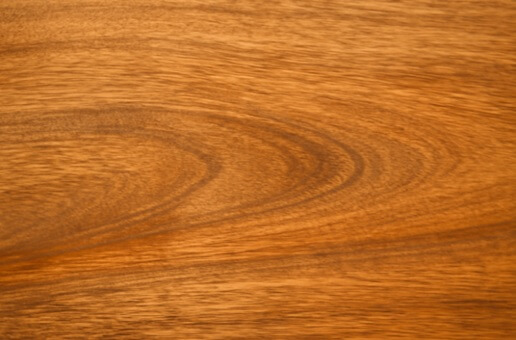
Mango Wood Properties and Characteristics
Understanding the mango wood quality involves examining its unique characteristics. One of the most striking features of mango wood is its grain pattern, which often displays varied hues ranging from light yellow to deep brown. These colors can be influenced by the age of the wood and the specific conditions in which the tree was grown.
The mango wood color can vary significantly, with some pieces exhibiting beautiful streaks of darker shades that add depth and character to the finished product. This natural variation makes mango wood particularly appealing for furniture, as each piece is unique and can serve as a statement item in any room.
In terms of mango wood texture, it is generally smooth and easy to work with, making it an excellent choice for craftsmen and DIY enthusiasts. Additionally, the wood has a natural sheen that enhances its beauty without requiring extensive finishing. When selecting mango wood, it’s essential to consider its visual characteristics to ensure it fits well with your design aesthetics.
Mango Wood Durability
When investing in furniture, durability is a major consideration. The question often arises: is mango wood durable? The answer is yes, mango wood possesses a fair degree of durability, making it suitable for various applications. While it may not be as resistant to scratches and dings as harder woods, it can still withstand everyday use, making it an excellent choice for dining tables and other furniture pieces that see frequent activity.
Mango wood's durability is further enhanced by its natural resistance to moisture and pests, which is an advantage in humid climates. This resilience is partly due to the unique cell structure of the wood, which helps it resist warping and cracking. However, it’s important to note that proper care and maintenance are necessary to maximize the longevity of mango wood products.
Regular cleaning and the application of protective finishes can help maintain the quality of mango wood furniture over time. Understanding the mango wood durability will help consumers make informed decisions about their purchases and care routines.
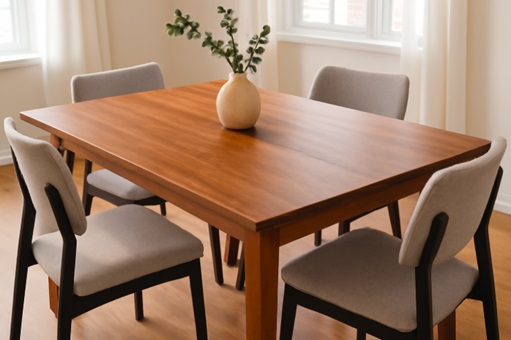
Is Mango Wood Sustainable?
In today's environmentally conscious world, sustainability is a crucial factor to consider when selecting materials. Many consumers wonder, is mango wood sustainable? The good news is that mango wood is considered a sustainable option. This is due to the fact that mango trees are often harvested after they have reached maturity and have a productive lifespan in fruit production.
When mango trees are cut down for lumber, new trees are typically planted, ensuring that the cycle continues. This practice not only provides a renewable source of wood but also contributes to the local economy in regions where mango trees are grown.
Additionally, mango wood is often sourced from trees that are no longer productive for fruit harvesting, which means that the wood is a byproduct of the fruit industry. This practice reduces waste and promotes a more sustainable approach to forestry. Understanding the sustainability of mango wood can help consumers feel good about their purchases, knowing they are contributing to responsible sourcing practices.
Medicinal Uses
Beyond its wood, the mango tree has several medicinal uses that have been recognized for centuries. Various parts of the tree, including the bark, leaves, and fruit, have been used in traditional medicine to treat various ailments. The leaves, for instance, are often brewed into teas and are believed to help regulate blood sugar levels, making them beneficial for diabetics.
The bark of the mango tree is also known for its astringent properties and has been used to treat diarrhea, dysentery, and other gastrointestinal issues. In some cultures, the resin from the mango tree is applied to wounds to promote healing due to its antimicrobial properties.
Understanding the medicinal uses of mango tree adds another layer of value to this remarkable plant, showcasing its versatility beyond just its wood. This knowledge can inspire further appreciation for the mango tree and encourage consumers to explore products that celebrate its many benefits.
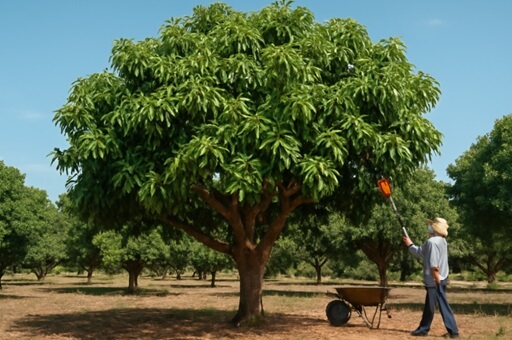
Where Can I Buy Mango Wood?
If you’re interested in purchasing mango wood, you might be wondering, where can I buy mango wood? Fortunately, mango wood is widely available through various channels, including local lumber yards, specialty wood suppliers, and online retailers. Many companies that specialize in sustainable wood products will carry mango wood, given its popularity and eco-friendly status.
Additionally, furniture stores that focus on handcrafted or artisanal pieces often stock furniture made from mango wood. This allows customers to experience the beauty and quality of mango wood firsthand. When purchasing mango wood, it’s essential to ensure that the supplier is reputable and can provide information about the sourcing and sustainability of their products.
Shopping online can also offer a wide selection of mango wood products, from raw lumber to finished furniture. Websites like Etsy or Amazon may have a variety of options, including handmade items and larger pieces for construction projects. This accessibility makes it easier than ever to find quality mango wood boards or finished products.
Mango Wood Furniture Pros and Cons
When considering if mango wood is good for furniture, it’s important to weigh the mango wood furniture pros and cons. On the positive side, mango wood is known for its stunning appearance, with unique grain patterns and rich colors that can enhance any space. Its moderate hardness makes it suitable for a variety of furniture types, from tables to chairs, without being overly heavy or cumbersome.
Additionally, mango wood is relatively affordable compared to other hardwoods, making it an attractive option for budget-conscious consumers. The wood's natural resistance to moisture and pests also adds to its appeal, requiring less maintenance than some other materials.
However, there are some downsides to consider. While mango wood is durable, it may not withstand heavy impacts as well as harder woods. Some consumers also report that it can be prone to scratches and dents if not properly cared for. Understanding both the advantages and disadvantages of mango wood furniture can aid consumers in making an informed decision about their purchases.
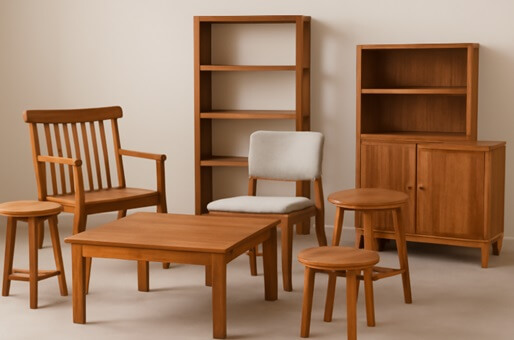
Finishing Mango Wood
Proper finishing is crucial for enhancing the natural beauty of mango wood while providing protection from wear and tear. When it comes to finishing mango wood, various options are available, including stains, oils, and lacquers. Each option offers different levels of protection and aesthetic appeal.
For a natural look, applying a clear finish can help preserve the wood's original color and grain pattern. Oils, such as tung or linseed oil, can penetrate the wood, providing a rich sheen while highlighting the unique characteristics of the grain. On the other hand, stains can be used to alter the color of the wood, allowing for customization to match existing decor.
When finishing mango wood, it’s essential to prepare the surface properly by sanding it smoothly and removing any dust. Following the manufacturer's instructions for application and drying times will ensure the best results. Understanding the best practices for mango wood finishes can ultimately enhance the longevity and beauty of your mango wood products.
Mango Wood vs Oak
When comparing different types of wood for furniture, many people ask, mango wood vs oak—which is better? Both types of wood have their unique properties and advantages. Oak is renowned for its strength, durability, and resistance to wear, making it an excellent choice for high-traffic furniture. It also has a classic appearance with prominent grain patterns.
On the other hand, mango wood is lighter and may be easier to work with for intricate designs and detailed craftsmanship. It offers a broader spectrum of colors and grain patterns, providing a more exotic look. Additionally, mango wood is often more affordable than oak, making it a popular choice for budget-conscious consumers.
Ultimately, the choice between mango wood and oak will depend on the specific needs of the project, personal preference, and budget considerations. Understanding the differences between these two woods can aid consumers in making the right decision for their furniture needs.
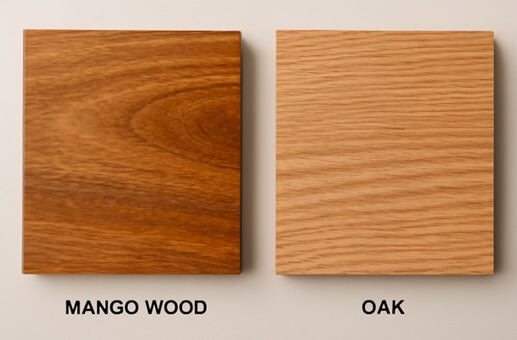
What Does Mango Wood Look Like?
If you’re curious about aesthetics, you might wonder, what does mango wood look like? Mango wood is characterized by its rich and varied color palette, typically ranging from light golden hues to darker browns. This diversity in color is often accompanied by striking grain patterns that can include streaks and swirls, adding to the wood's visual appeal.
The texture of mango wood is generally smooth, which makes it an excellent choice for furniture and decorative items. Unlike some hardwoods, mango wood can take on a semi-gloss finish, which enhances its natural beauty and brings out the richness of its colors.
When selecting mango wood for a project, it’s beneficial to view samples or finished products in person to appreciate the unique characteristics of the wood fully. Understanding what color is mango wood can help consumers align their choices with their design preferences.
Explore More About Wood: